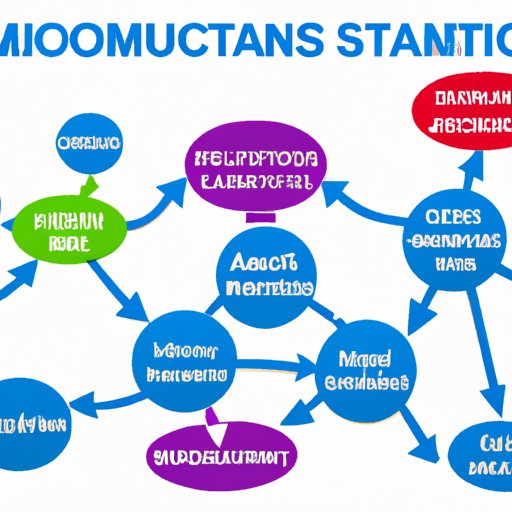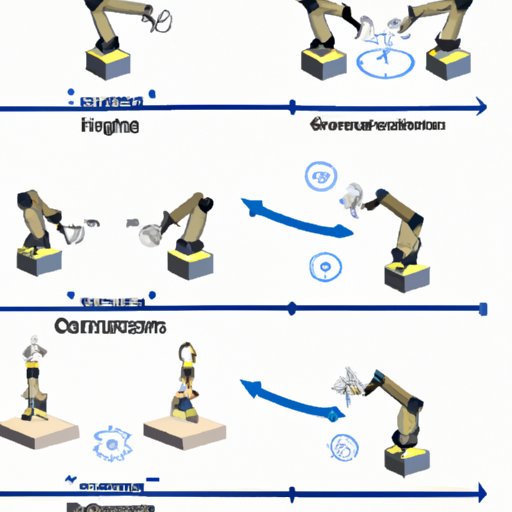Introduction
Business process automation is an important tool for businesses looking to streamline their operations and increase efficiency. By automating manual processes, companies can reduce costs, improve accuracy, and free up resources to focus on more important tasks. In this article, we’ll explore what business process automation is and how it can benefit your business. We’ll also discuss real-world examples of companies that have used automation successfully, traditional vs. automated processes, different types of automation, and the challenges of implementing automation. Finally, we’ll provide tips for getting started with automation.

Overview of Business Process Automation
Business process automation (BPA) is the use of technology to automate manual processes in order to improve productivity and efficiency. It involves using software or hardware systems to execute repetitive tasks such as data entry, customer service, and administrative tasks. By automating these processes, businesses can save time, reduce errors, and lower costs. In addition, automation can help companies stay competitive by improving their ability to respond quickly to changing market conditions.
Definition of Business Process Automation
According to Gartner, “Business process automation (BPA) is the application of technology to enable organizations to design, deploy, track, manage, and optimize business processes. BPA uses technologies such as robotic process automation (RPA), artificial intelligence (AI), machine learning (ML), workflow, and analytics to automate and streamline manual tasks.” 1

Benefits of Business Process Automation
Business process automation offers a number of benefits for businesses, including:
Saves Time and Money
Automation can save businesses both time and money by eliminating the need for manual labor. According to a study by McKinsey & Company, “automating processes can reduce costs by 25 to 50 percent.” 2 This can result in significant cost savings for businesses over time.
Increases Efficiency
By automating manual processes, businesses can increase their efficiency and performance. Automation eliminates the need for manual data entry, which can be time-consuming and prone to errors. Automation also allows businesses to quickly respond to customer inquiries and orders, leading to better customer satisfaction.
Reduces Human Error
Automation helps reduce human error by ensuring that tasks are completed accurately and consistently. This can lead to fewer mistakes and improved accuracy, resulting in higher quality output.
Real-World Examples of Companies that Have Used Automation Successfully
There are many examples of businesses that have successfully implemented automation. For instance, Amazon has been using automated warehouse robots since 2012 to speed up shipping times and increase efficiency. Walmart has also implemented automation to automate its supply chain and improve customer service. Additionally, banks have been using automation to process transactions more quickly and accurately.
Traditional vs. Automated Processes
The traditional approach to business processes involves manual labor and paper documents. This method is time-consuming and inefficient, and can lead to errors due to human error. On the other hand, automation involves using technology to automate processes, resulting in faster and more accurate results.

Different Types of Automation and Their Uses
There are several different types of automation that can be used to automate business processes. These include:
- Robotic Process Automation (RPA): RPA is the use of software robots to automate manual tasks. It can be used to automate data entry, customer service, and other repetitive tasks.
- Artificial Intelligence (AI): AI is the use of computer algorithms to simulate human intelligence. It can be used to automate decision-making processes, such as customer segmentation and product recommendations.
- Machine Learning (ML): ML is the use of algorithms to learn from data and make predictions. It can be used to automate processes such as fraud detection and predictive analytics.
- Workflow Automation: Workflow automation is the use of software to automate processes such as approvals and notifications. It can be used to streamline manual processes and reduce errors.
Challenges of Implementing Automation
While automation can offer numerous benefits, there are some challenges associated with implementing it. These include:
- Cost: Automation can be costly to implement and maintain.
- Security: Automation may introduce security risks if not properly monitored and controlled.
- Lack of Flexibility: Automated processes may lack the flexibility to adapt to changing business needs.
Tips for Getting Started with Automation
If you’re interested in implementing automation in your business, here are some tips for getting started:
- Start small: Don’t try to automate everything at once. Start with one process and then expand as needed.
- Identify potential areas for automation: Take a look at your current processes and identify areas where automation could be beneficial.
- Choose the right tools: Select the right tools for your needs, such as RPA, AI, ML, or workflow automation.
- Test and measure: Test your automation solutions before rolling them out and measure the results.
Conclusion
Business process automation can offer a range of benefits for businesses, from cost savings to increased efficiency. By automating manual processes, businesses can save time, reduce errors, and improve customer satisfaction. However, there are some challenges associated with implementing automation, such as cost and security concerns. With the right approach and tools, businesses can successfully implement automation and reap the rewards.
(Note: Is this article not meeting your expectations? Do you have knowledge or insights to share? Unlock new opportunities and expand your reach by joining our authors team. Click Registration to join us and share your expertise with our readers.)
